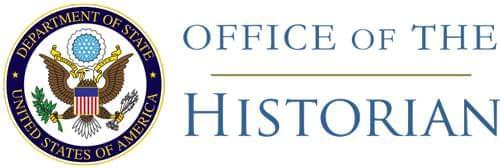464. Report by the Joint Strategic Plans Committee to the Joint Chiefs of Staff1
RE-EXAMINATION OF THAI-LAO DEFENSE PLANNING (U)
The Problem
1. To consider the existing U.S. Policy in Mainland Southeast Asia2 as it applies to Thai-Lao defense planning.
[Page 958]Facts Bearing on the Problem
2. Current national policy provides in part that the United States will:
- a.
- Encourage the countries of Southeast Asia to cooperate closely with each other on a basis of mutual aid and support, and support indigenous efforts to develop regional associations.
- b.
- Encourage and support close bonds between Laos and Thailand, including such political associations, economic cooperation, and joint military planning as feasible.
3. On 14 December 1955, the Joint Chiefs of Staff recommended3 to the Secretary of Defense that the United States encourage and support bilateral Thai-Lao planning for the defense of Laos, subject to the following conditions:
- a.
- The planning is in consonance with SEATO and U.S. objectives.
- b.
- The planning is directed toward the immediate threat but of such a nature that it may be subsequently integrated into SEATO planning.
- c.
- The planning will result in a practical plan that can be supported logistically by the United States.
- d.
- CINCPAC is represented during planning discussions in order to influence resulting plans as to feasibility, practicability and suitability.
- e.
- The plans as developed do not include employment of U.S. forces other than those which may be required by provision of U.S. logistic support to Thai and Lao forces.
4. The outline plan of operations4 with respect to Laos, dated 29 May 1957, provides for the encouragement of Thai-Lao contingent defense planning when political conditions permit, and the continuation of technical planning guidance now being furnished by Chief JUSMAG–Thailand. In Laos the Programs Evaluation Office (PEO) functions as military element of the country team.
5. For additional facts, see Enclosure “B”.5
Discussion
6. For discussion, see Enclosure “C”.6
[Page 959]Conclusions
7. It is desirable that the Thai-Lao defense planning be continued.
8. CINCPAC should be directed to take such action as he deems practicable to encourage Thai-Lao defense planning.
Recommendations
9. It is recommended that the Joint Chiefs of Staff forward the memorandum in Enclosure “A”, together with its Appendix,7 which reflects the above conclusions, to the Secretary of Defense.8
10. No recommendation is made as to the distribution of this paper to commanders of unified or specified commands.
- Source: JCS Files, CCS 092 Asia (6–2–48) (2) sec 33. Top Secret. Prepared in collaboration with the Joint Intelligence Committee.↩
- NSC 5612/1; Enclosure to J.C.S. 1992/565. [Footnote in the source text. NSC 5612/1 is printed as Document 119.]↩
- Enclosure to J.C.S. 1992/501. [Footnote in the source text.]↩
- On file in Joint Secretariat; see Enclosure to J.C.S. 1992/611. [Footnote in the source text. The Outline Plan is not printed, but see footnote 3, Document 445.]↩
- Attached but not printed.↩
- Below.↩
- Attached but neither printed.↩
- According to a covering note by the Joint Secretariat, the Joint Chiefs of Staff met on August 21, noted the conclusions in paragraphs 7 and 8 above, but agreed not to send the Secretary of Defense an attached draft memorandum recommending encouragement of Thai-Lao defense planning as the political situation permitted. The draft memorandum, reiterating the recommendations above, was attached, but is not printed.↩
- See Enclosure to J.C.S. 1992/485. [Footnote in the source text. Reference is to Document 310.]↩
- See Enclosure to J.C.S. 1992/565. [Footnote in the source text. Reference is to the Outline Plan of Operations With Respect to Laos.]↩
